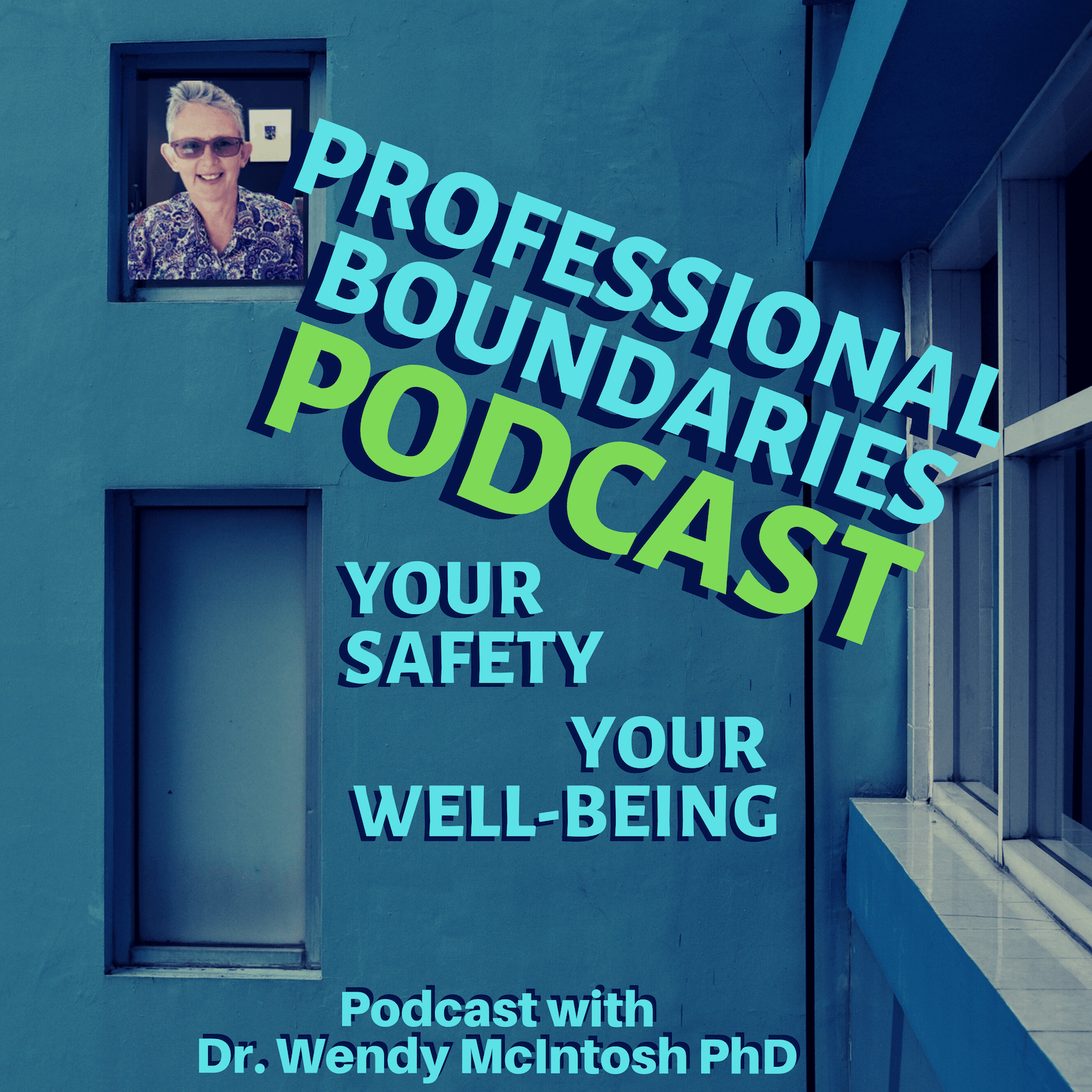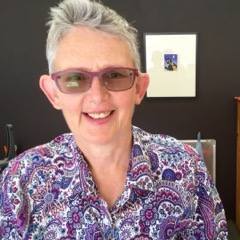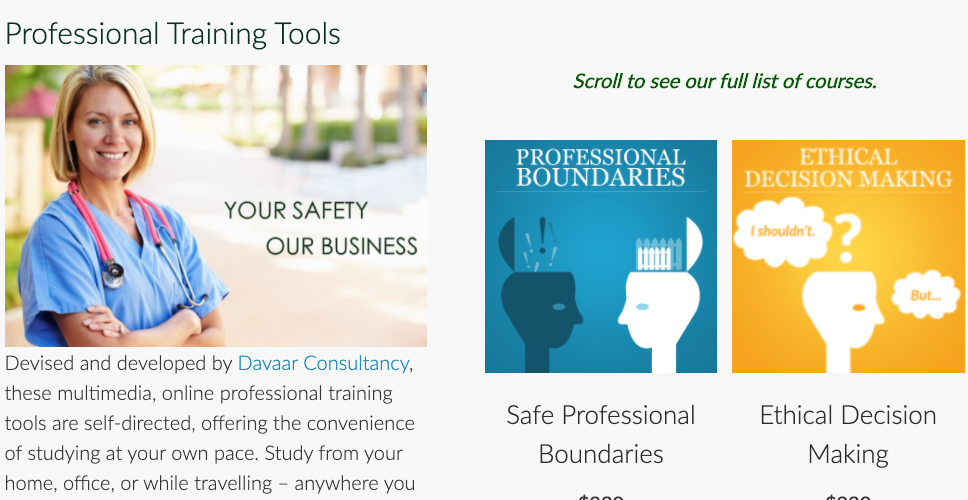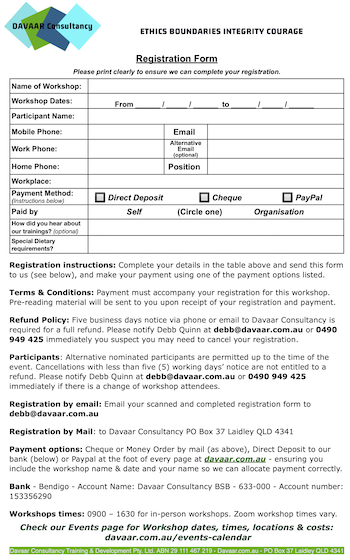SPECIAL EPISODE – Boundaries and COVID-19
It’s April 2020 and the world is in the grip of a global pandemic. During this trying time, each of us needs help navigating this crisis. In this special episode Dr. Wendy McIntosh PhD, from Davaar Consultancy, discusses tapping into your support networks, the pressures of being at work during the COVID-19 pandemic, and the immense challenges of maintaining safe Professional Boundaries when we’re all operating under additional pressures.
Wendy also talks about the stresses of working from home, teaches us how to use Box Breathing to get some relief, and how to use The Third Space model to use the shift between work and home to find a little peace, even when work and home are in the same location.

Use the links to the right to subscribe in your favourite Podcast app, or click the play button to listen. Visit our Podcast page to see all episodes.
We hope you’ll enjoy our Professional Boundaries Podcast and learn from each episode. If you’ve ever wondered about your own boundaries in your Professional role, or been alerted about the risks of crossings or violations, this podcast will help you learn what to watch for, and ways to stay out the danger zones.
Dr. Wendy McIntosh welcomes both your interest and curiosity. Send Wendy questions at wendy@davaar.com.au or via Twitter, Instagram or Linked In
Podcast: Play in new window | Download (Duration: 39:04 — 22.8MB)
Subscribe: Apple Podcasts | Spotify | TuneIn
In this podcast series, Dr. Wendy McIntosh PhD shares insights and strategies about developing and maintaining professional boundaries. Professional Boundaries are not limited to the clinical or therapeutic arena. If you are in a professional role – a nurse, a teacher, support worker, doctor, police officer, a prison officer, council worker, healthcare worker, or hairdresser. If you are a volunteer or belong to a theatre group, a choir, a sports club, there will be something in this podcast for you and the relationships you have with others. Setting boundaries in our life is necessary for our emotional, psychological, spiritual and physical well being. Setting boundaries is about our safety.

Dr. Wendy McIntosh PhD
Since 2005 Wendy has been developing her knowledge and interest in the area of professional boundaries. Wendy delivers workshops on boundaries in Australia (where she now lives) and internationally when invited to do so. She is continually integrating learning and insights she gains from the work she does in professional boundaries. Wendy comes from a nursing, and predominately psychiatric nursing, background.
Wendy consistently receives feedback on her passion, knowledge, and creativity as a presenter and facilitator. Enjoy exploring boundaries in this podcast series as Wendy takes you on your own reflective journey on your professional boundaries.
Music clips in this podcast:
Easy Lemon by Kevin MacLeod
Link: https://incompetech.filmmusic.io/song/3697-easy-lemon
License: http://creativecommons.org/licenses/by/4.0/
References:
Dr. Adam Fraser: The Third Space
TED Talks: Kelly McGonigal – Make Stress Your Friend
Box breathing: https://www.youtube.com/watch?v=FJJazKtH_9I
WHO on Twitter: https://twitter.com/WHO?ref_src=twsrc%5Egoogle%7Ctwcamp%5Eserp%7Ctwgr%5Eauthor
ICN on Twitter: https://twitter.com/ICNurses?ref_src=twsrc%5Egoogle%7Ctwcamp%5Eserp%7Ctwgr%5Eauthor
Transcript: Special Episode – Boundaries and COVID-19
Hello to all our listeners, wherever you are in the world. Welcome to this special boundaries podcast – boundaries and Covid 19. My first message is that I trust you, your loved ones, colleagues and friends are staying safe. As safe as you can be in this rapidly changing scenario that our world and peoples of the world are currently experiencing.
I never in a million years envisaged that I would do an episode on professional boundaries and viruses, yet here I am. You would be correct to wonder – really Wendy where are you going with this one? Boundaries and virus that’s a new one. True there is so much “new” happening in the world just now. I will trust that whatever emerges from my writing for this episode is what is required to be shared.
My purpose for this episode is not to discuss the realities that are Covid 19. Information and updates on Covid 19 are well covered in much detail through many sites including media, government and health sites (country, state and territory specific), professional group sites and the World Health Organisation sites. It is good to find a couple of reliable sources that you trust for those updates. I follow twitter leads for the WHO and the International Council of Nurses – the ICN. I have given links to those two organisations at the end of the transcript of this episode. Transcripts for all our podcasts are available on our website: www.davaar.com.au
No, my purpose for this episode is to yarn with you about boundaries during this current climate. Specifically, I will interweave my ideas about the potential for increased risk of transgressions (over and under involvement) during this time and also, more importantly, to talk you through strategies for managing your boundaries and self-care on a daily, weekly and probably monthly basis as we travel with and get affected by Covid 19. Over involvement may occur because as professionals individuals want to do their job to the very best of their ability and in extraordinary times as we are currently in, to give more and more. Conversely under involvement may occur because an individual is overwhelmed, exhausted, given so much that they have no more to give.
Remembering that boundaries are about safety – your safety as a professional. Your safety in relationship to your clients and colleagues. Currently in the shifting sands of what constitute safety at work, at home, in society, then the context of boundaries also shifts and changes. It is important in the constant shifting to keep updated about policies and guidelines, changes in your organisation and scope of practice for the professional roles you are being asked to do.
I have been thoughtful about professional and personal boundaries since news of Covid 19 became more constant in our media. My reflections on boundaries and Covid 19 has ramped up further in the last two weeks as I have become more aware of the following:
reports of increased stress and distress in our health professionals coping with the demands that have been placed upon them, including lack of Personal Protective Equipment (PPE)
reports of how the context of the virus has been used in domestic violence relationships by perpetrators as another way to use control and fear
hearing about the stress of teachers who worry about their safety and the safety of children coming to school, providing education for children not attending school and a reality that for some children school may be the only place of safety for them, what happens when the option of going to a place of safety is removed from those children?
There are many more examples I can think of stimulated through discussions I have had with colleagues and family here in Australia and around the world. Each of you listening to this podcast will have your own experiences, your own stressors and your own means of managing yourself safely at this time.
I am aware that the focus of this podcast will have a sense of steering towards health professionals. It is important for me to acknowledge though that boundary transgressions could also occur across many professional groups at this time including, teachers, support workers, child care workers, police and prison officers.
I envisage that the podcast will also be relevant to those of you listening who are now having to work from home. There are still boundary considerations to be mindful of in the office space created in one’s own home. I envisage that the strategy content towards the end of this podcast encompasses you no matter what your working environment currently. I am also aware that some of our listeners may have become recently unemployed due to the impact of responses to Covid 19 from government strategies. This podcast is also for you, looking after you at this time of increased stress and distress.
So let’s look at – Red flags and potential reasons for boundary transgressions during the Covid 19 experience.
In episode five we explored reasons for transgressions using a four levelled model to assist us to understand the complexity of influencing factors in boundary transgressions. The fourth level, that of broader systemic influences is highlighted at this time. When the context shifts as rapidly as it is doing with Covid 19 – especially in terms of social mores, workload factors, safety fears for family members and safety issues due to lack of / or inappropriate PPE – there could be an increased risk of vulnerability to boundary transgressions for individual professionals and / or professional groups.
Potential pressuring influences such as social media, traditional journalism, changes in government strategies (country-specific), expectations from the community and expectations within professional groups may all contribute to increased vulnerability. A vulnerability to do more. A vulnerability to be more. A vulnerability to assist no matter the cost. The cost to self, psychologically, emotionally physically, spiritually and socially could be high at this time.
Internationally health professionals, especially nurses and doctors are grappling with how to do more with less. Health professionals are dying due to Covid 19 and lack of PPE has been identified as a major contributing factor for those deaths, according to regular updates from the WHO and ICN.
Doing more with less is not a new experience for nurses and doctors however the level of urgency, the large numbers of patients being admitted in crises at the one time and again lack of PPE has significantly increased the stress levels of the health workforce.
Increased stress is another factor that we know anecdotally increases the risk of boundary transgressions. When we humans are stressed and we experience being overwhelmed, our ability to think clearly, to consider options, to be discerning about our actions is significantly reduced. We do or say things in the “heat of the moment” that we later regret, we agree to action without thinking of the potential longer term impacts. We say “yes” and “yes” again because we do not want to let our colleagues or our clients down. Too many yeses however, without a break, without downtime, without time for self can have severe consequences for an individual and in the current reality with Covid 19, severe consequences for groups of people.
It is also important to remember that when there has been a movement towards and into over-involvement and overextending oneself out of the Zone of Helpfulness (refer to podcast three)– there is a potential consequence that there will also be a movement towards becoming under-involved, especially if an individual experiences symptoms of compassion fatigue also referred to in some literature as vicarious trauma.
We are hearing reports of burnout being experienced by health professionals around the world from WHO and the ICN and in recently published journals. I have no doubt we will see evidence of greater numbers of front line health staff experience compassion fatigue and burnout as Covid 19 continues its impact in hospitals around the world. I also envisage that a significant number of health professionals will experience symptoms of PTSD once the crises curves are over and their bodies and minds start to recover, to heal. When there is more time for them, there will be more time for their bodies and minds to remember and re-experience what they have been through.
I think now is as good a time as any in this episode to introduce what I experience as a very useful strategy for self-care – a breathing exercise that can be easily used in any given time and as many times as we remember to use it during a day. It is called box breathing taking slow and deep breaths and was originally developed by Mark Devine a former Navy Seal Commander to assist members of his unit control their breathing and clear their minds in extremely stressful and overwhelming circumstances. If the navy seals use it – then I say bring it on.
So I am going to take you through box breathing shortly, it takes about 3 minutes to do. Give yourself the treat of box breathing – 3 minutes in a 24 hour period would be good. Two lots of 3 minutes in 24 hours better still. Five lots of 3 minutes in 24 hours excellent and I guarantee 3 minutes of box breathing every 1-2 hours will assist you to manage stress you are experiencing, in a more controlled way. Control your breathing, decrease your stress levels, decrease your cortisol levels. In a companionship way as your stress and cortisol levels decrease you will experience; increased clearer thinking and perhaps more significantly an increased sense that you are doing ok and that you have control over you in scenarios where a sense of control may be difficult to identify.
So here goes, you can do the box breathing standing up, sitting down. Whatever position works best for you in the time that you choose to do it. The main thing is to have your back upright. You can have your eyes open or closed, whatever works best for you. I am going to talk through the steps and then I will do one set of the box breathing with you. The fantastic thing about podcasts, you can replay this section as often as you wish until you have trained and integrated box breathing into looking after you.
So the simple steps that I will take you through shortly are:
Begin with a deep breath in through your nose and then breathe out through your nose
Four seconds you will breathe in through your nose
Four seconds you will hold the breath
Four seconds you will breathe out through your nose
Four seconds you will hold
Then repeat three times
So let’s you and I do it together, I will speak it out, you can practice.
Big breath in, big breath out
Begin the cycle
Four seconds breathe in through your nose
Four seconds hold the breath
Four seconds breathe out through your nose
Four seconds hold the breath
Then repeat three times
Allow a big sigh at the end – sigh out that which you no longer wish to hold onto.
As you get used to box breathing you can increase the count from 4 to 5 seconds for each step or more.
Find a number that works for you.
Box breathing easy – easy and effective
On the theme of stress – it is clear in my discussions with folks that many are experiencing stress through the constant media updates that they follow on Facebook, Twitter, Linked In, Instagram etc. It is important to significantly decrease and if possible stop looking at those sites and updates. When a person is overwhelmed and the information they take in through reading and discussions intensifies that sense of being overwhelmed further – it is just not good for one’s state of well being. So rather than that minute or two, you would usually spend on your smart device – how about spending three minutes doing box breathing.
Another easy to integrate strategy at such a busy and overwhelming time is that of creating a safe and gentle image, a place that has meaning for you and to experience yourself being there. Add to the image a sentence that acknowledges and appreciates something about you at this time. As I write this I experience myself sitting on rocks at one of my favourite beaches at home in Scotland. As I sit and listen to the sea before me and the noise of the gulls flying around, as I take in the bigness of the world. I am grateful that I can sit here and recreate that experience, I settle into myself more. This is a safe and comfortable place for me.
What is your safe and comfortable place – create it now. Invite it into your day at any time.
In the boundary workshops that I deliver, there is a model I use that resonates with participants called the Third Space (previously referenced in podcast 6). This model developed by Adam Fraser focuses on creating a transition space between work and home. I believe the model has increased relevance currently due to the social distancing and stay at home requirements because for many people there will be less transition space between work and home. For those who now have to work from home – this model is also very beneficial – creating a transition between the “office room” and the rest of the home.
I will talk you through the model and perhaps if you are listening to this at home, you can even have the experience of the model. Choose three objects – can be anything – pens, cushions, books, toys, cutlery, leaves, sticks. If you are not able to get three objects because you are driving then you can still create the third space using your imagining, here we go.
I am going to talk you through the Third Space between being at work and going home – however, you can also do it the opposite way – home to work.
So if you are in a place where you have been able to pick up objectives. Put the first object on the floor this will symbolise you being at work getting ready to go home. In Fraser’s model, this is the First space. Stand at the object and experience your body as you prepare to go home (thoughts, emotions, movements in your body). Put the second object on the floor some distance from the first one this symbolises you being at home, in Fraser’s model this is Second space. Stand at the Second space now and experience in your body what it is like to be at home (thoughts, emotions, movements in your body).
In our busy, reactive and at this time stressful and worrying time we move between the first and second space without really taking time for us, of having a transition space, a settling space between work and home – what Frazer calls the Third Space.
So take the third object and place it on the floor between your first and second space.
Now briefly stand back at the first space you being at work, (experience what you experience).
Now go to your newly created Third space – your transition space. This is your space – no clients, no colleagues, no rush. You being with you. Perhaps use some box breathing just to help you settle further. In this third space acknowledge the workday you have had. Look back at the first space. Appreciate all that you did. Acknowledge at least one positive aspect from the day. Say goodbye to the working day. Experience your body settle.
Now turn round towards the second space that of being at home – in the place where you now stand your Third Space, experience yourself in this moment, be aware of your breathing, be aware of what you are leaving behind in the first space. Gently shake your body, release tension, perhaps more box breathing, create a gentleness for you in this third space, an appreciation and generosity for you in this space. Create how you want to enter your home, how you will greet other people in your home, how you will let them know what you need. Experience you in your body looking after you at this time. Keep gently shaking your body free from tension that may still be there. Bring your body to an upright position back straight, shoulders straight, chin up, notice your body settling.
When you assess you are ready to leave the third space to go to the second space (being at home) – do so. When you get to the second space – notice what is different in you and your experience of you from when you stood at your second space at the very beginning of this exercise. Notice any differences that you are experiencing in your body (thinking, emotions, body movement).
To integrate the Third Space into our lives we have to practice it on a daily basis. Allow and enable yourself to create a third space for you on the journey between work and home (or conversely home and work, of office room to the rest of home). If you can allow 5 minutes to be in your third space – fantastic. If you can allow 10 mins to be in your third space – fantastic. You will learn from your body how much time you need in your third space – trust your body it is perhaps the biggest guide to your well being that you will ever have.
I envisage much creativity rising in you as you create the third space for you.
I just want to summarise in a lid,t some of the main points I have presented in this episode
Revisiting risk factors and red flags that I identify as increasing the risk of boundary transgressions at this time:
- Increased experience of stress
- Lack of sleep
- Poor diet
- Not enough time for self
- Decreased sense of support
- Increased sense of feeling unsafe
- Being overwhelmed at the experiences one is going through
- Being overwhelmed when colleagues share their experiences, their fears
And in that list we also have strategies these include:
Revisiting strategies
Decrease your experience of stress as you can through the following:
Box breathing – as often as you can during the day and before sleep and even when you wake up in the morning.
I have also included a link at the end of this transcript of a fantastic Ted talk by Kelly McGonigal titled Make stress your friend – well worth a visit when you have time
Third space – create at least one for you each day
Stretch exercises – it may be difficult due to workload, closed or decreased access to areas like gyms, walking – then exercise your body with some stretch exercise – your body requires you to look after it consciously at all times and especially in these current times
Switch off your devices – give your brain, your heart and soul time out from the constant barrage of updates
Getting regular sleep – where possible. The usual amount of hours that work for you and your well being. From some people that might be 4-5 hours, for others 7-8.
Your body will serve you well as long as you keep it hydrated, nutrition up and allow sleep.
Get outside as you can – remembering social distancing and guidelines from respective governments
Seek counsel, support – you do not have to carry the stress and burden of Covid 19, the stress of clients and their families on your own – utilise the support mechanisms that are in place, from the organisation you work in, the professional group you belong to and other support mechanisms available in the countries where you live.
Supporting colleagues – as it is psychologically safe for you to do so, by this I mean finding a balance between supporting a colleague in distress and being caught up in their need to overshare their distress with another person. Be there for a colleague and know when it is time to suggest and perhaps provide contact information for those support services that will be available for them.
As I move towards the end of this episode it is worth noting that scientific journals are now reporting positive impacts of Covid 19 on the atmosphere. Some ozone holes are starting to close, some water systems are becoming cleaner and running freer. Birds and fish returning to habitats they have not been seen in for many years. As our earth heals and the human cycle of recovery will occur – may we all work together in the creative ways that we can as human beings to look after the land and environment. My sense is that in doing that, we will all benefit longer term.
This podcast series has been written by myself Wendy McIntosh. A big thank you to family and colleagues who hear each podcast before it is released and who provide valuable editing feedback. Thank you to Nikki Fryn, my internet guru who has done the production for these podcasts. I always love to hear from you our listeners any questions, scenarios, reflections that you want to be discussed as part of a podcast episode. There is still much to learn and each question and scenario posed provides opportunities to expand learning about professional boundaries. My email address is wendy@davaar.com.au, you can also contact me through our social media of twitter and Instagram. I would be delighted for podcasts to be as meaningful as possible to all who listen. So join with me.You can access our podcasts through a number of sources including our website davaar.com.au/pbpodcast
The spelling for Davaar is D for Discussion, A for awareness, V for Visceral, A for Action, A for Alert, R for Red flags.
Keep safe, keep strong, keep connecting with those you value in your life and connect with other people you have not yet met.
Thank you for listening.



 our registration form
our registration form